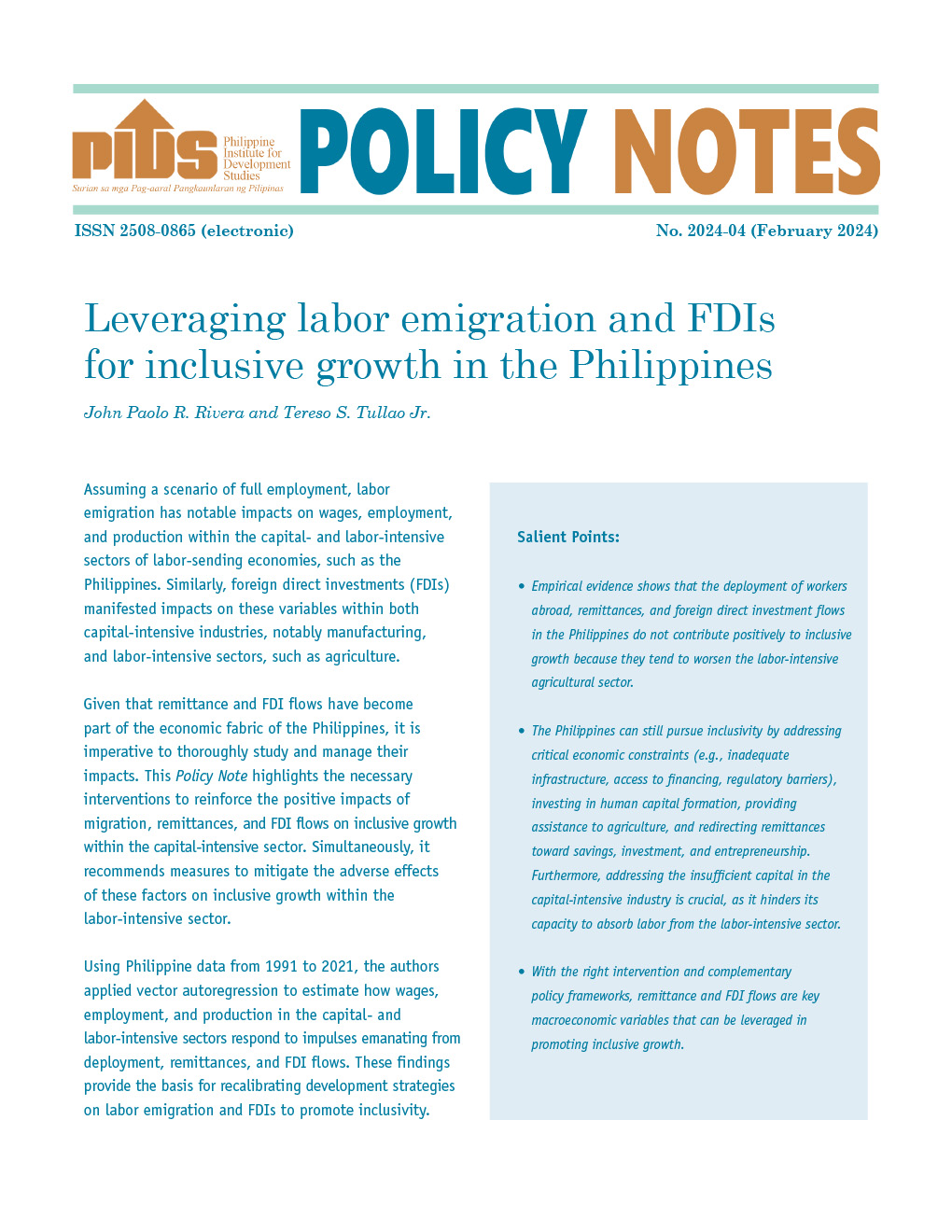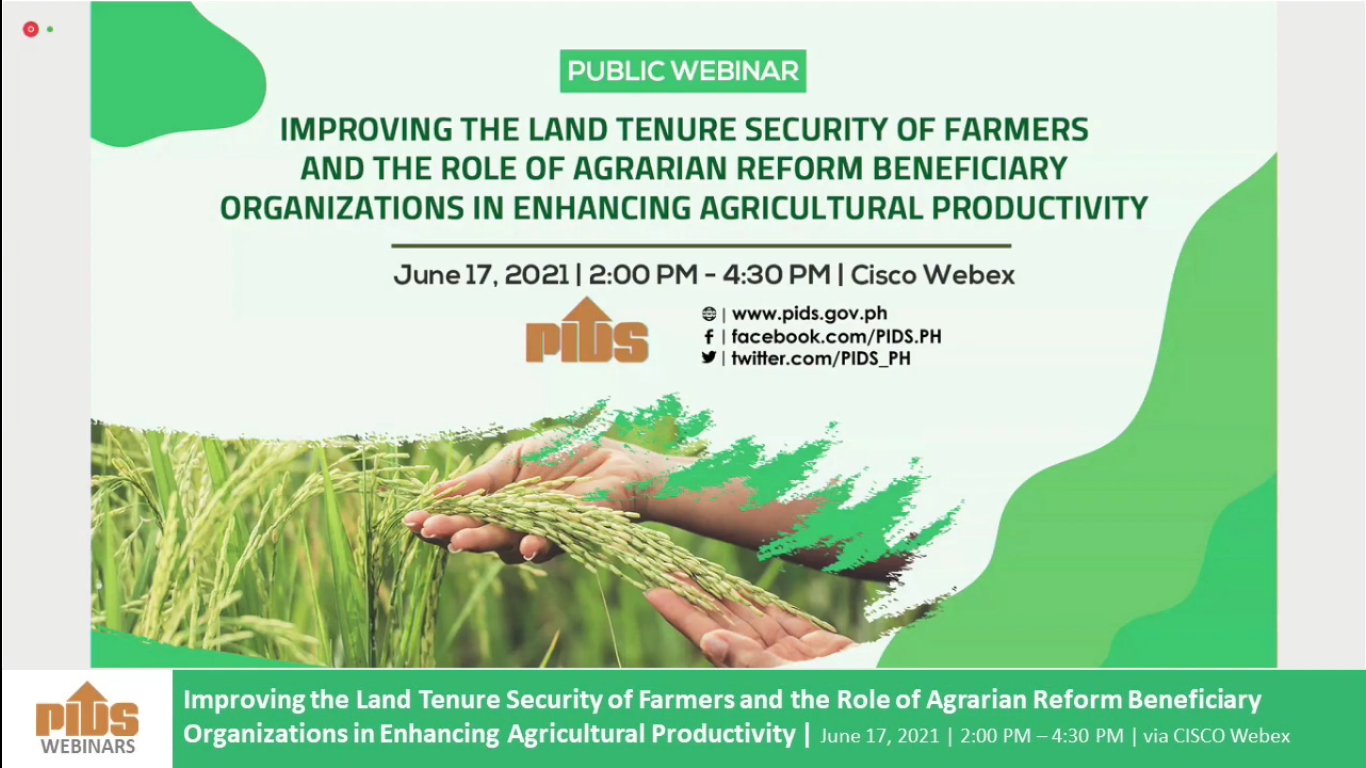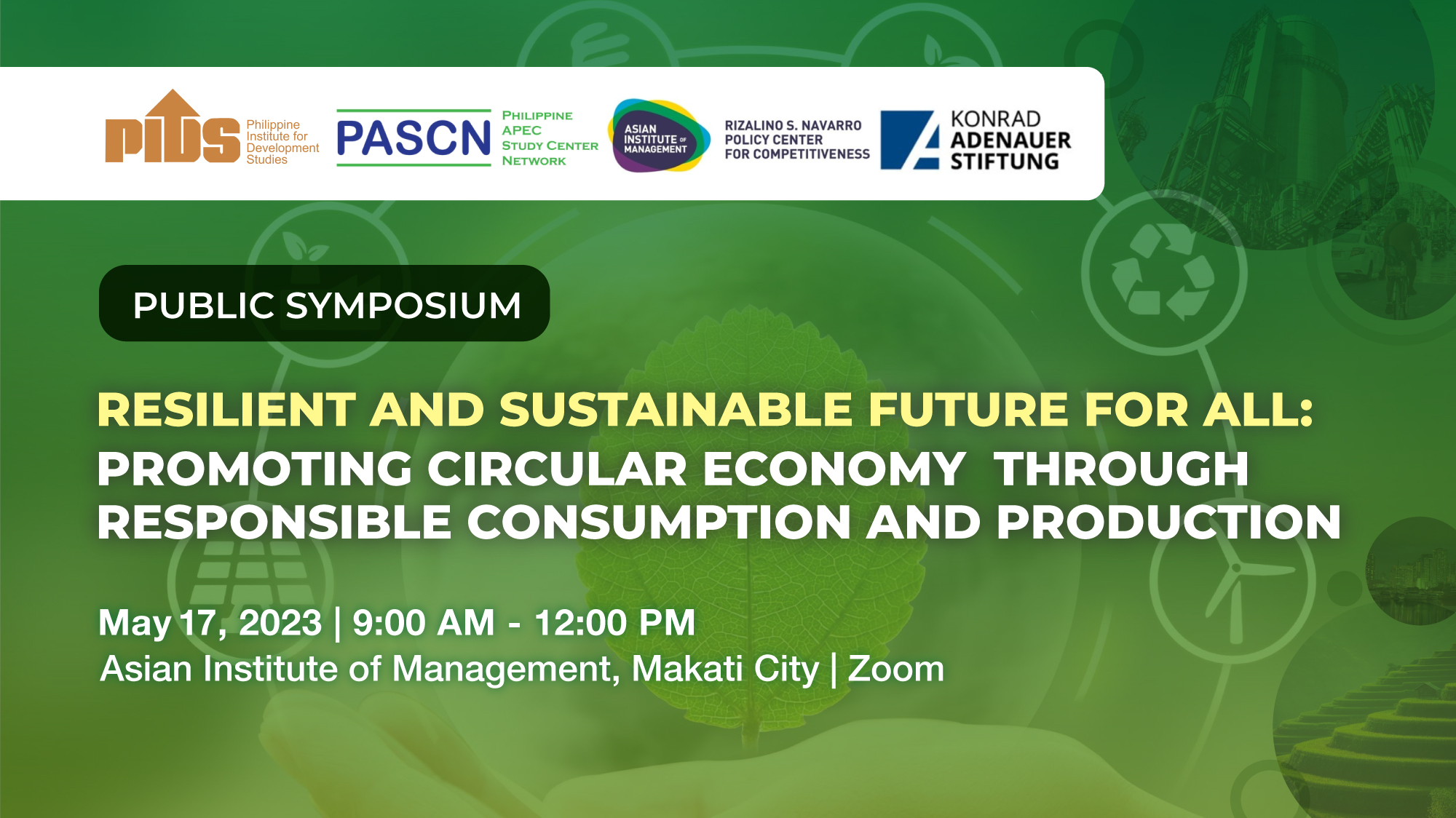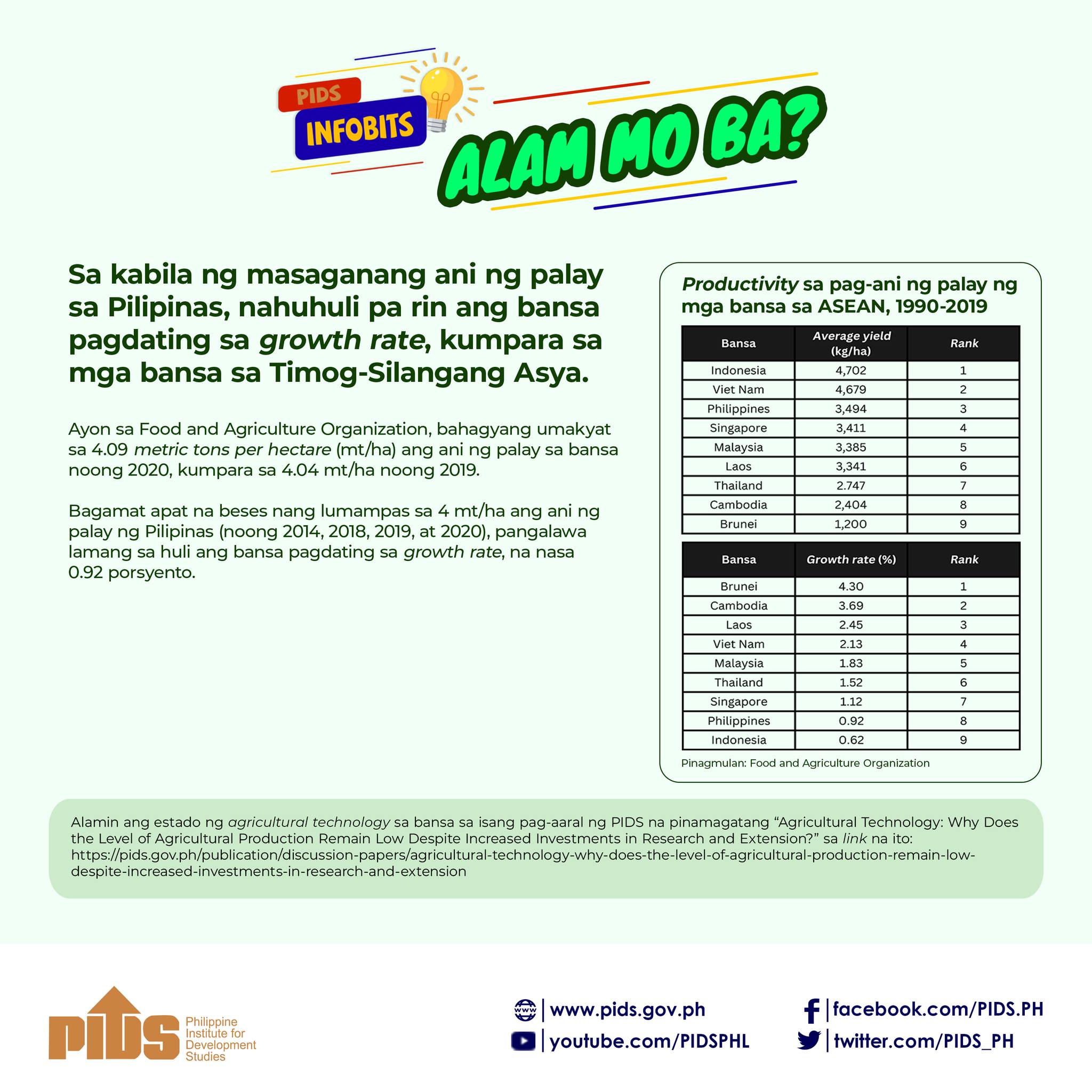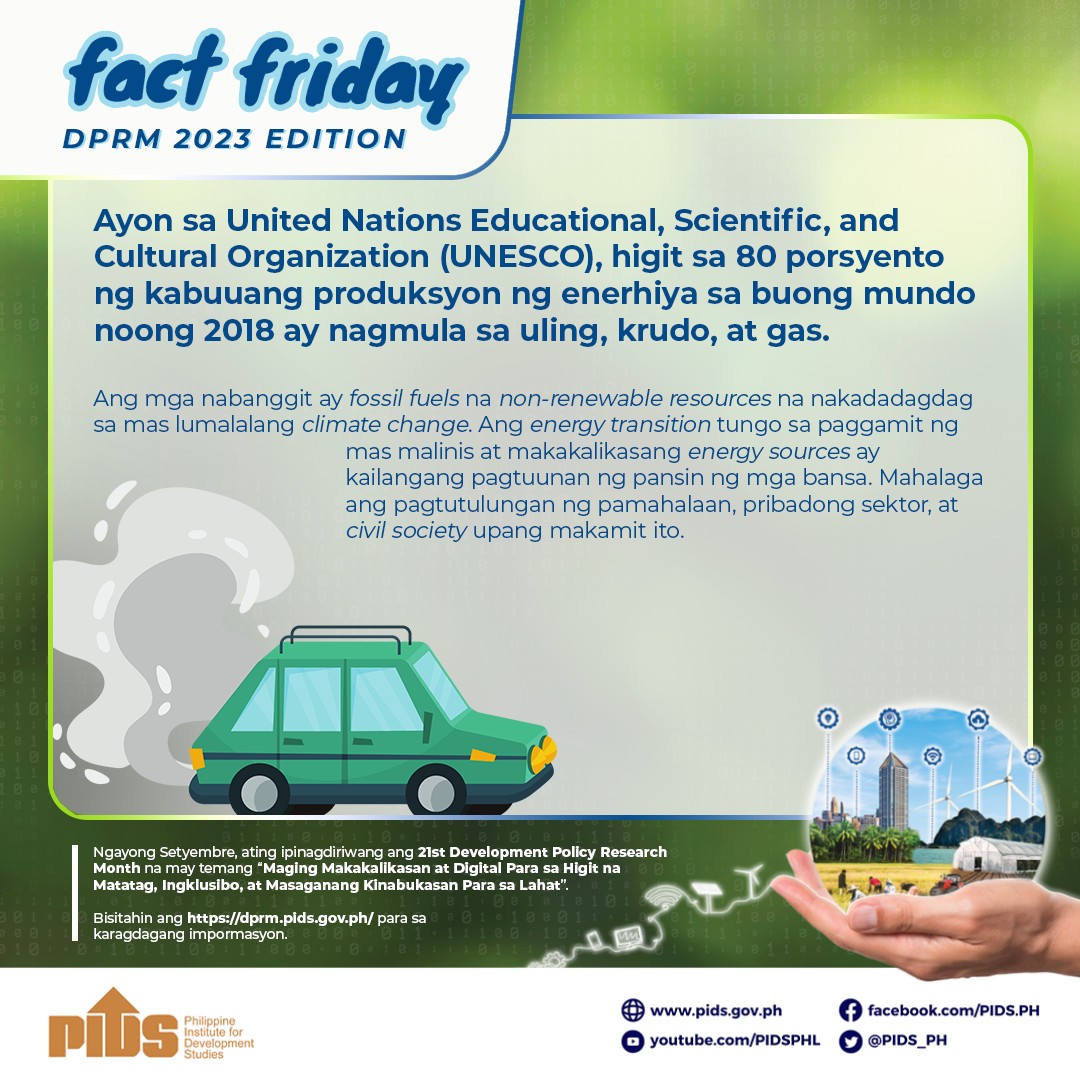
Despite the government’s attempt to develop other industries as economic drivers, the agriculture sector remains central to the Philippine economy. According to the January 2016 Labor Force Survey, it is the second largest employer in the country, providing opportunities to 27 percent of Filipino workers. It also produces the bulk of the population’s food needs and provides the raw materials that fuel the rest of the economy.
However, the sector has registered laggard growth for many years despite the huge public investments poured into it. In 2015, the government spent PHP 114 billion for agriculture, 32 percent higher than the expenditures in 2014, based on Philippine Statistics Authority data. Roehlano Briones, senior research fellow at the Philippine Institute for Development Studies (PIDS), attributes the sector’s perennial poor performance to the government’s failure to adopt the necessary reforms, such as the transition from mere farming to agribusiness. This can be achieved, he said, by shifting to high-value crops, which are more profitable than traditional crops. For a full agricultural transition, Briones also urges the government to capitalize on agricultural production support, such as infrastructure, credit and insurance, and research and development (R&D). Unfortunately, it is also in these aspects that the Philippine government usually falls short.
PIDS President Gilbert Llanto, in a paper, noted that the lack of rural infrastructure can partly explain the decline in the country’s agricultural productivity. He underscored that greater mobility and access to markets and support services through infrastructure permit entry into new and possibly more profitable opportunities. He encouraged the government to invest in rural infrastructure, which has direct and indirect effects on the productivity of the agriculture sector.
A modern and operational irrigation system is also vital in attaining agricultural progress. However, the country has ineffective and outdated irrigation facilities. In a study, PIDS Consultants Cristina David and Arlene Inocencio attributed these to “inadequate water supply, inappropriate designs, and difficulties in operation and maintenance”, which the government must address to improve the national irrigation system.
In recent years, weather-related shocks have taken a huge toll on farmers’ livelihoods. The government provides agricultural insurance through the Philippine Crop Insurance Corporation (PCIC) to help farmers cope with natural hazards and pest infestations. However, a multisite impact evaluation project conducted by PIDS revealed that the program has a low uptake among farmers due to PCIC’s low presence at the grassroots and insufficient insurance coverage. According to PIDS Senior Research Fellow and Project Director Celia Reyes, because of the inadequate funding given to PCIC, the agency had to offer a small insurance cover to service more farmers.
R&D activities can also bolster agricultural gains. Unfortunately, they remain one of the government’s underfunded programs. Ideally, the average spending for R&D should be equal to 1 percent of a country’s gross domestic product. In the Philippines, this is only 0.14 percent in 2013 based on World Bank data.
Inarguably, the Philippines’ agriculture sector still requires a great deal of comprehensive review and analyses, research-based interventions, innovations, and political will to make it more efficient, competitive, and resilient.
You may access the following publications as well as related studies from the PIDS website and the SocioEconomic Research Portal for the Philippines. Simply type the relevant keywords in the Search box.
- Impact Assessment of the Agricultural Production Support Services of the Department of Agriculture (DA) on the Income of Poor Farmers/Fisherfolk: Review of the Evidence
- Poverty and Agriculture in the Philippines: Trends in Income Poverty and Distribution
- Crop Insurance: Security for Farmers and Agricultural Stakeholders in the Face of Seasonal Climate Variability
- Credit Subsidy in Philippine Agriculture
- Evaluation of the Financial Sustainability of the Agricultural Insurance Programs of the PCIC
- Philippine Agriculture Saddled by Poor Irrigation Systems
- The Potentials of Agricultural Insurance as a Poverty Reduction Tool
- Is the Promise Being Fulfilled?...Microfinance in thePhilippines: Status, Issues and Challenges
- Does Poor Rural Infrastructure Constrain Agricultural Productivity?
- Agricultural Credit and Policy Council (ACPC): Performing More than It Should
- Is the Agricultural Insurance Program of the Philippines Serving the Poor?
- Study on Public and Private Expenditures on Research and Development: An Integrative Report
- The Impact of Infrastructure on Agricultural Productivity
However, the sector has registered laggard growth for many years despite the huge public investments poured into it. In 2015, the government spent PHP 114 billion for agriculture, 32 percent higher than the expenditures in 2014, based on Philippine Statistics Authority data. Roehlano Briones, senior research fellow at the Philippine Institute for Development Studies (PIDS), attributes the sector’s perennial poor performance to the government’s failure to adopt the necessary reforms, such as the transition from mere farming to agribusiness. This can be achieved, he said, by shifting to high-value crops, which are more profitable than traditional crops. For a full agricultural transition, Briones also urges the government to capitalize on agricultural production support, such as infrastructure, credit and insurance, and research and development (R&D). Unfortunately, it is also in these aspects that the Philippine government usually falls short.
PIDS President Gilbert Llanto, in a paper, noted that the lack of rural infrastructure can partly explain the decline in the country’s agricultural productivity. He underscored that greater mobility and access to markets and support services through infrastructure permit entry into new and possibly more profitable opportunities. He encouraged the government to invest in rural infrastructure, which has direct and indirect effects on the productivity of the agriculture sector.
A modern and operational irrigation system is also vital in attaining agricultural progress. However, the country has ineffective and outdated irrigation facilities. In a study, PIDS Consultants Cristina David and Arlene Inocencio attributed these to “inadequate water supply, inappropriate designs, and difficulties in operation and maintenance”, which the government must address to improve the national irrigation system.
In recent years, weather-related shocks have taken a huge toll on farmers’ livelihoods. The government provides agricultural insurance through the Philippine Crop Insurance Corporation (PCIC) to help farmers cope with natural hazards and pest infestations. However, a multisite impact evaluation project conducted by PIDS revealed that the program has a low uptake among farmers due to PCIC’s low presence at the grassroots and insufficient insurance coverage. According to PIDS Senior Research Fellow and Project Director Celia Reyes, because of the inadequate funding given to PCIC, the agency had to offer a small insurance cover to service more farmers.
R&D activities can also bolster agricultural gains. Unfortunately, they remain one of the government’s underfunded programs. Ideally, the average spending for R&D should be equal to 1 percent of a country’s gross domestic product. In the Philippines, this is only 0.14 percent in 2013 based on World Bank data.
Inarguably, the Philippines’ agriculture sector still requires a great deal of comprehensive review and analyses, research-based interventions, innovations, and political will to make it more efficient, competitive, and resilient.
You may access the following publications as well as related studies from the PIDS website and the SocioEconomic Research Portal for the Philippines. Simply type the relevant keywords in the Search box.
- Impact Assessment of the Agricultural Production Support Services of the Department of Agriculture (DA) on the Income of Poor Farmers/Fisherfolk: Review of the Evidence
- Poverty and Agriculture in the Philippines: Trends in Income Poverty and Distribution
- Crop Insurance: Security for Farmers and Agricultural Stakeholders in the Face of Seasonal Climate Variability
- Credit Subsidy in Philippine Agriculture
- Evaluation of the Financial Sustainability of the Agricultural Insurance Programs of the PCIC
- Philippine Agriculture Saddled by Poor Irrigation Systems
- The Potentials of Agricultural Insurance as a Poverty Reduction Tool
- Is the Promise Being Fulfilled?...Microfinance in thePhilippines: Status, Issues and Challenges
- Does Poor Rural Infrastructure Constrain Agricultural Productivity?
- Agricultural Credit and Policy Council (ACPC): Performing More than It Should
- Is the Agricultural Insurance Program of the Philippines Serving the Poor?
- Study on Public and Private Expenditures on Research and Development: An Integrative Report
- The Impact of Infrastructure on Agricultural Productivity


